Filter results
You can narrow down the results using the filters
Audience
Publication type
Topics
Our work
Diseases
Year
55 results
-
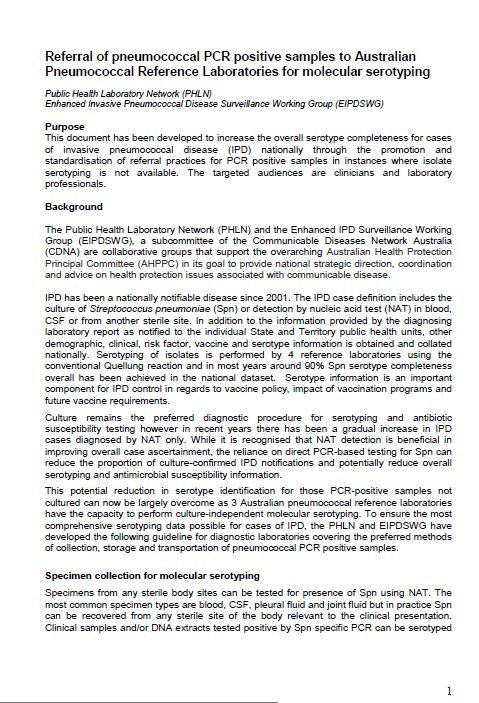
PHLN referral of pneumococcal PCR positive samples to Australian pneumococcal reference laboratories for molecular serotyping
This document is for clinicians and laboratory professionals. It gives information about referral practices for PCR positive samples when isolate serotyping is not available. -
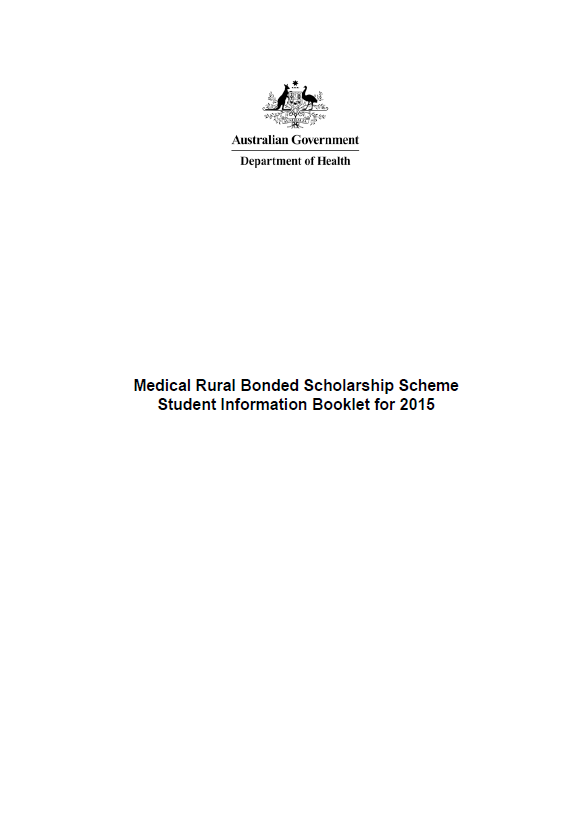
Medical Rural Bonded Scholarship (MRBS) Scheme – Information booklet 2015
This booklet provides information about the Medical Rural Bonded Scholarship (MRBS) Scheme for participants. -
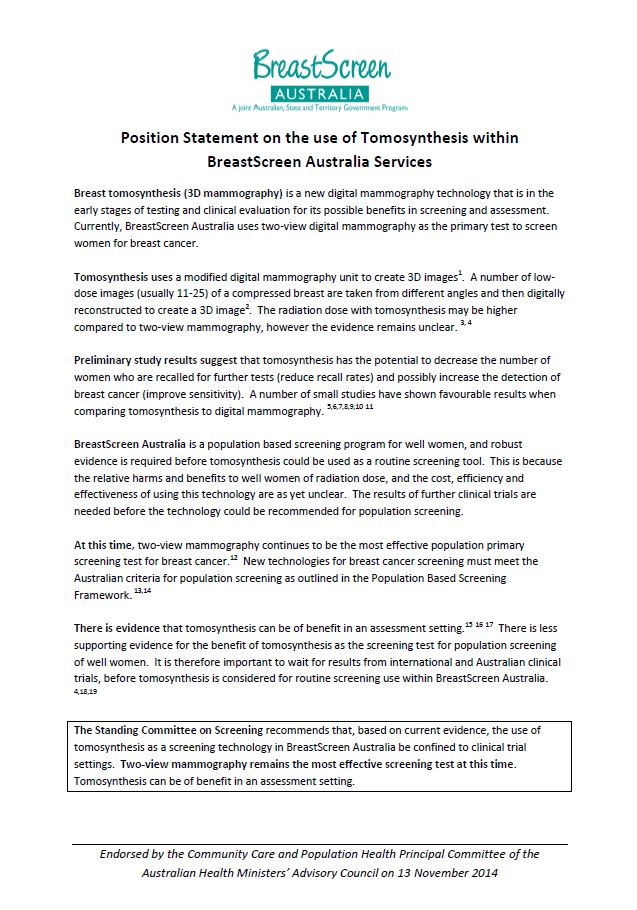
BreastScreen Australia – Position statement on the use of tomosynthesis within breast screening
Statement from BreastScreen Australia about whether breast tomosynthesis, a new type of 3D mammogram, will be used in our screening program. -
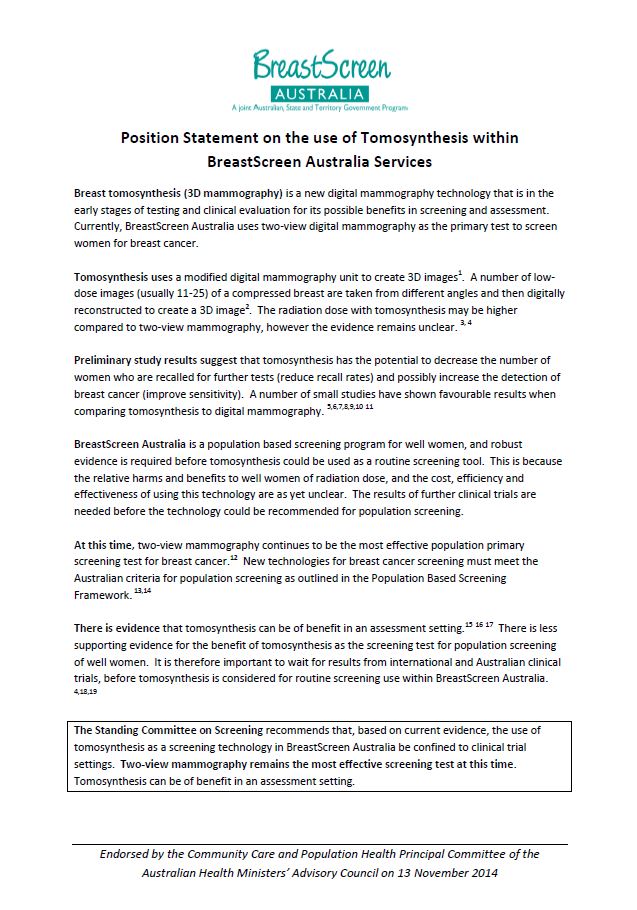
BreastScreen Australia – Position statement on the use of tomosynthesis within breast screening
Statement from BreastScreen Australia about whether breast tomosynthesis, a new type of 3D mammogram, will be used in our screening program. -
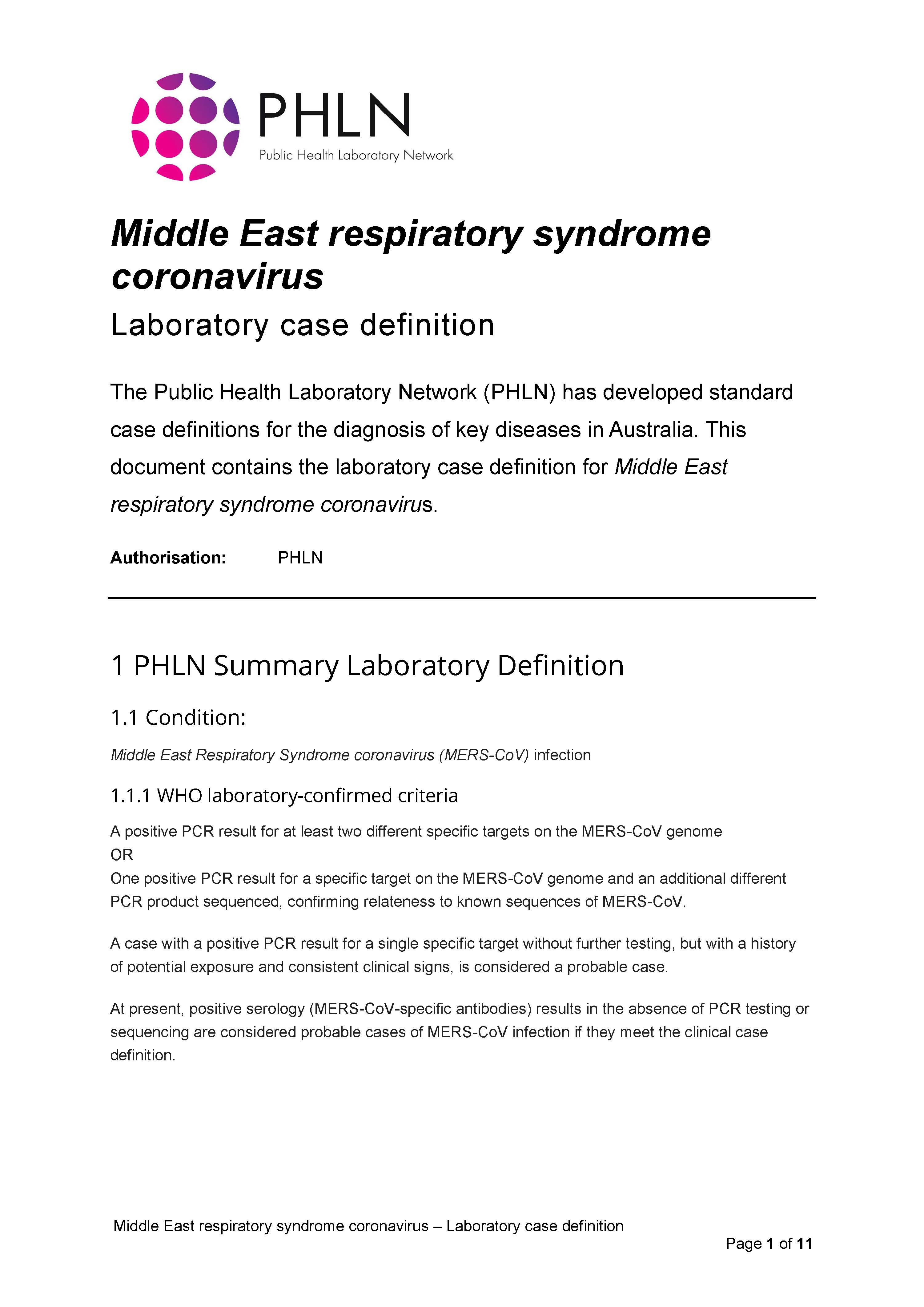
Middle East respiratory syndrome coronavirus – Laboratory case definition
The Public Health Laboratory Network (PHLN) has developed standard case definitions for the diagnosis of key diseases in Australia. This document contains the laboratory case definition for Middle East respiratory syndrome coronavirus. -
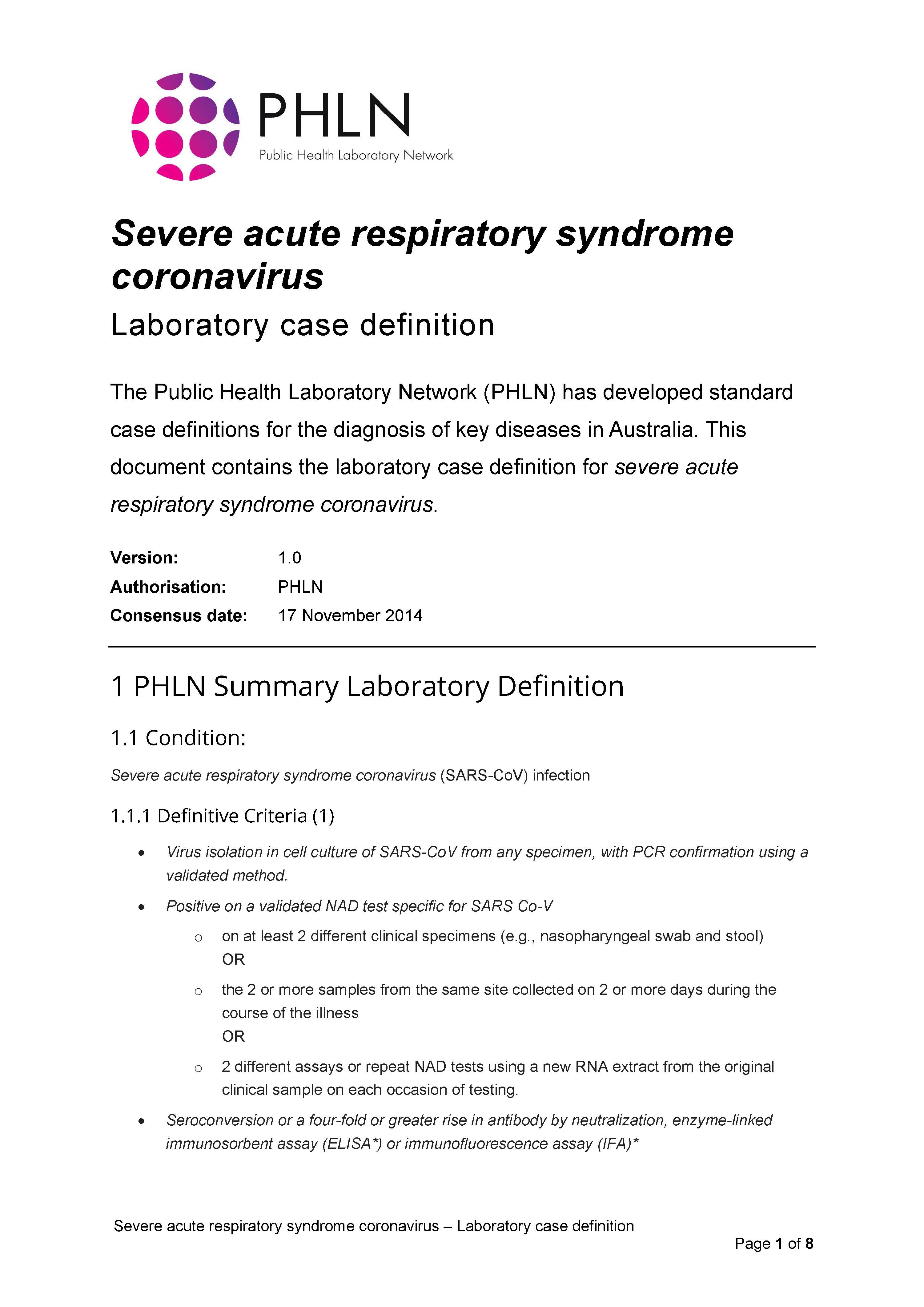
Severe acute respiratory syndrome coronavirus – Laboratory case definition
The Public Health Laboratory Network (PHLN) has developed standard case definitions for the diagnosis of key diseases in Australia. This document contains the laboratory case definition for severe acute respiratory syndrome coronavirus. -
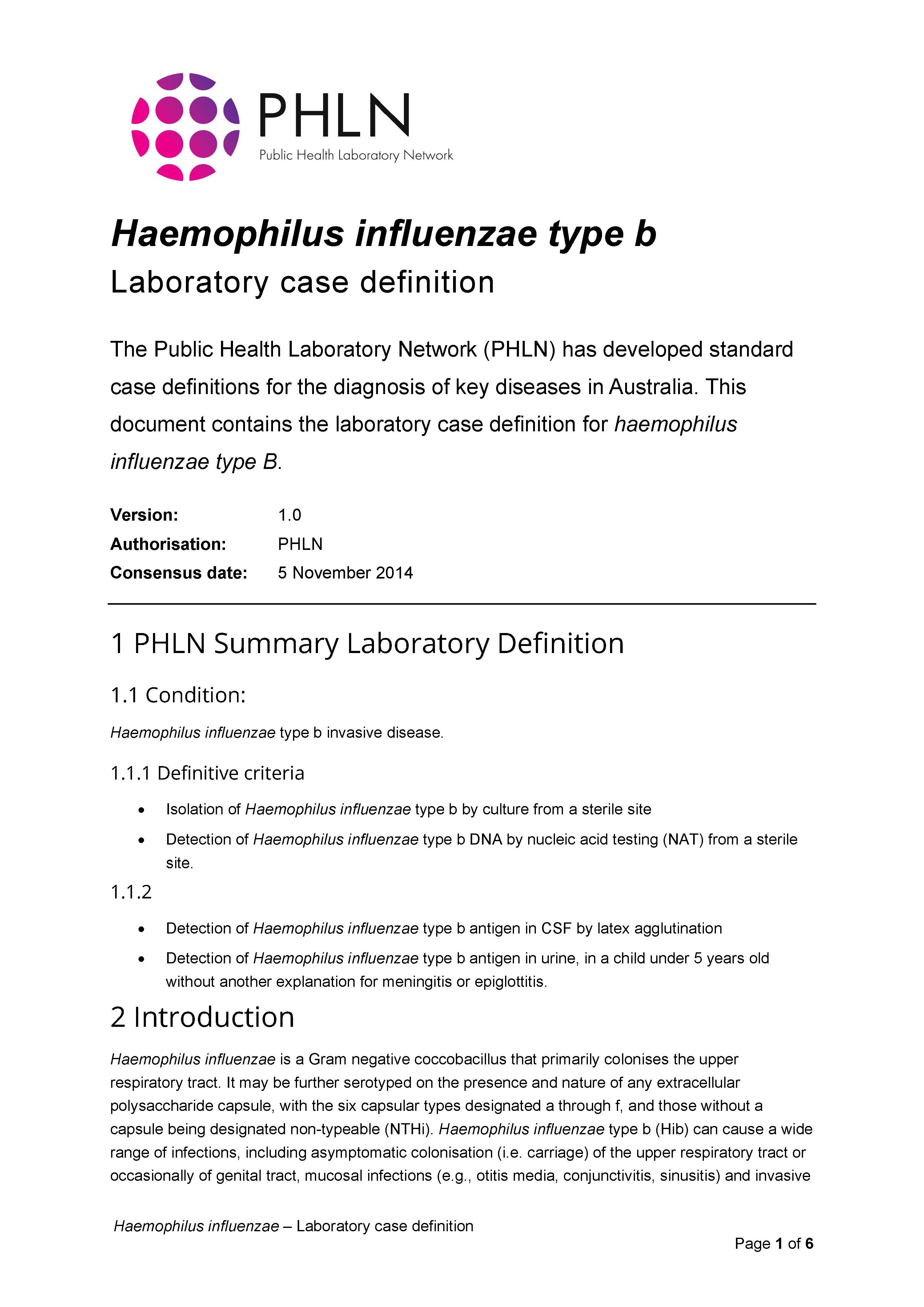
Haemophilus influenzae type b – Laboratory case definition
The Public Health Laboratory Network (PHLN) has developed standard case definitions for the diagnosis of key diseases in Australia. This document contains the laboratory case definition for haemophilus influenzae type b. -
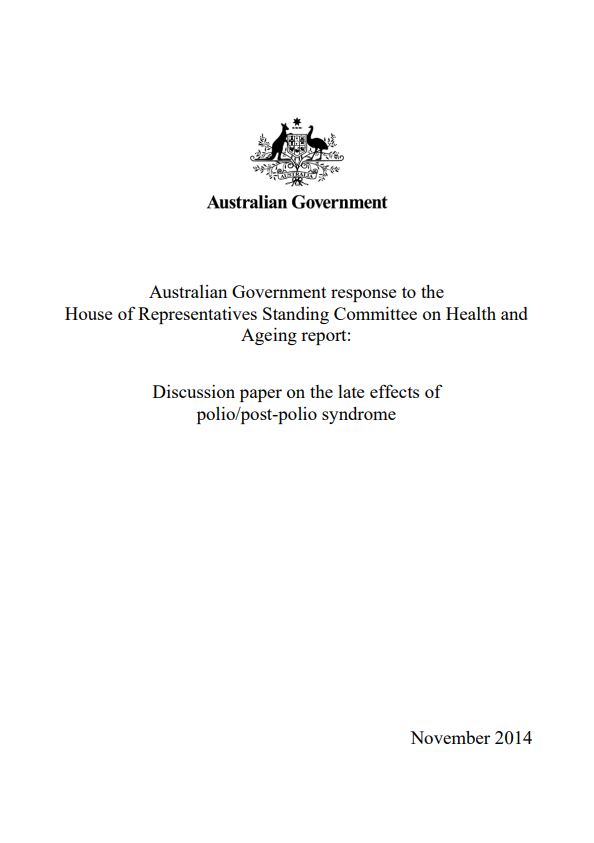
Discussion paper on the late effects of polio/post-polio syndrome
Australian Government response to the House of Representatives Standing Committee on Health and Ageing report: Discussion paper on the late effects of polio/post-polio syndrome -
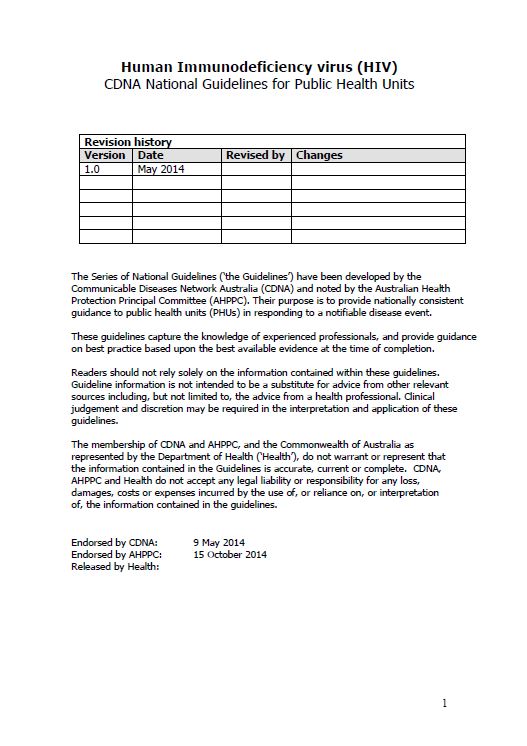
Human immunodeficiency virus (HIV) – CDNA National Guidelines for Public Health Units
These guidelines for Public Health Units provide nationally consistent guidance on how to respond to human immunodeficiency virus (HIV). They are part of a Series of National Guidelines (SoNGs) published by the Communicable Diseases Network Australia (CDNA). -
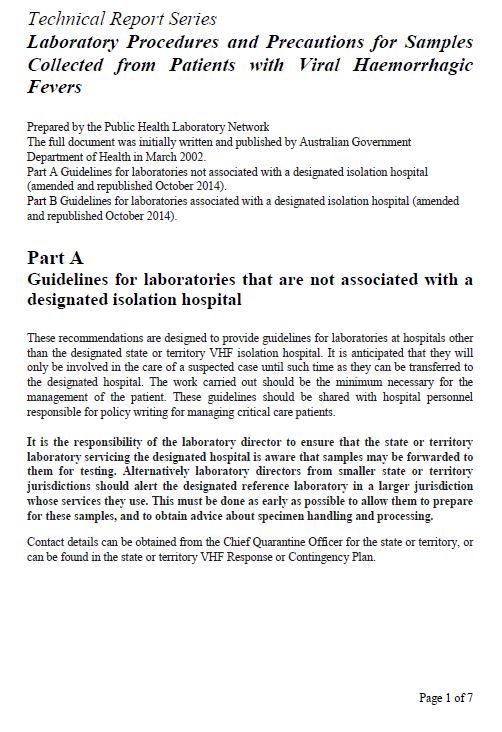
PHLN laboratory procedures and precautions for samples collected from patients with viral haemorrhagic fevers
These procedures explain how laboratories should collect and handle samples from patients with suspected viral haemorrhagic fevers. -
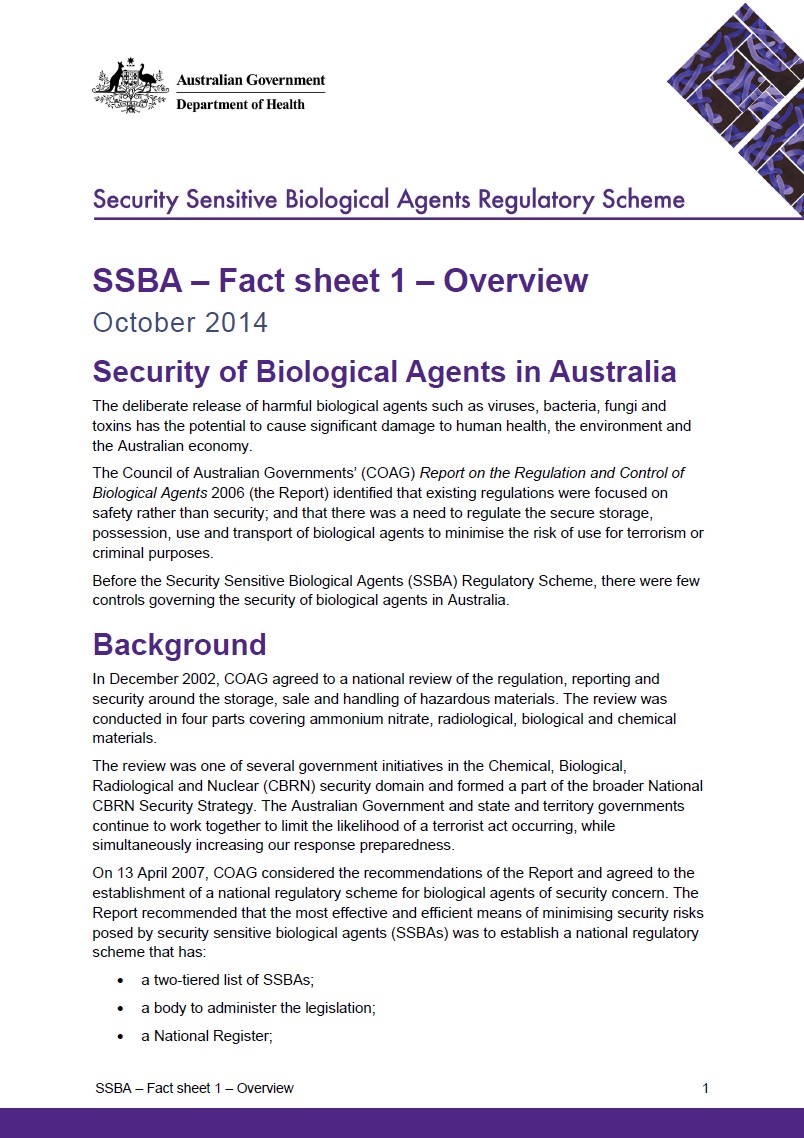
SSBA – Fact sheet 1 – Overview
This fact sheet provides an overview of the background of the SSBA Regulatory Scheme. -
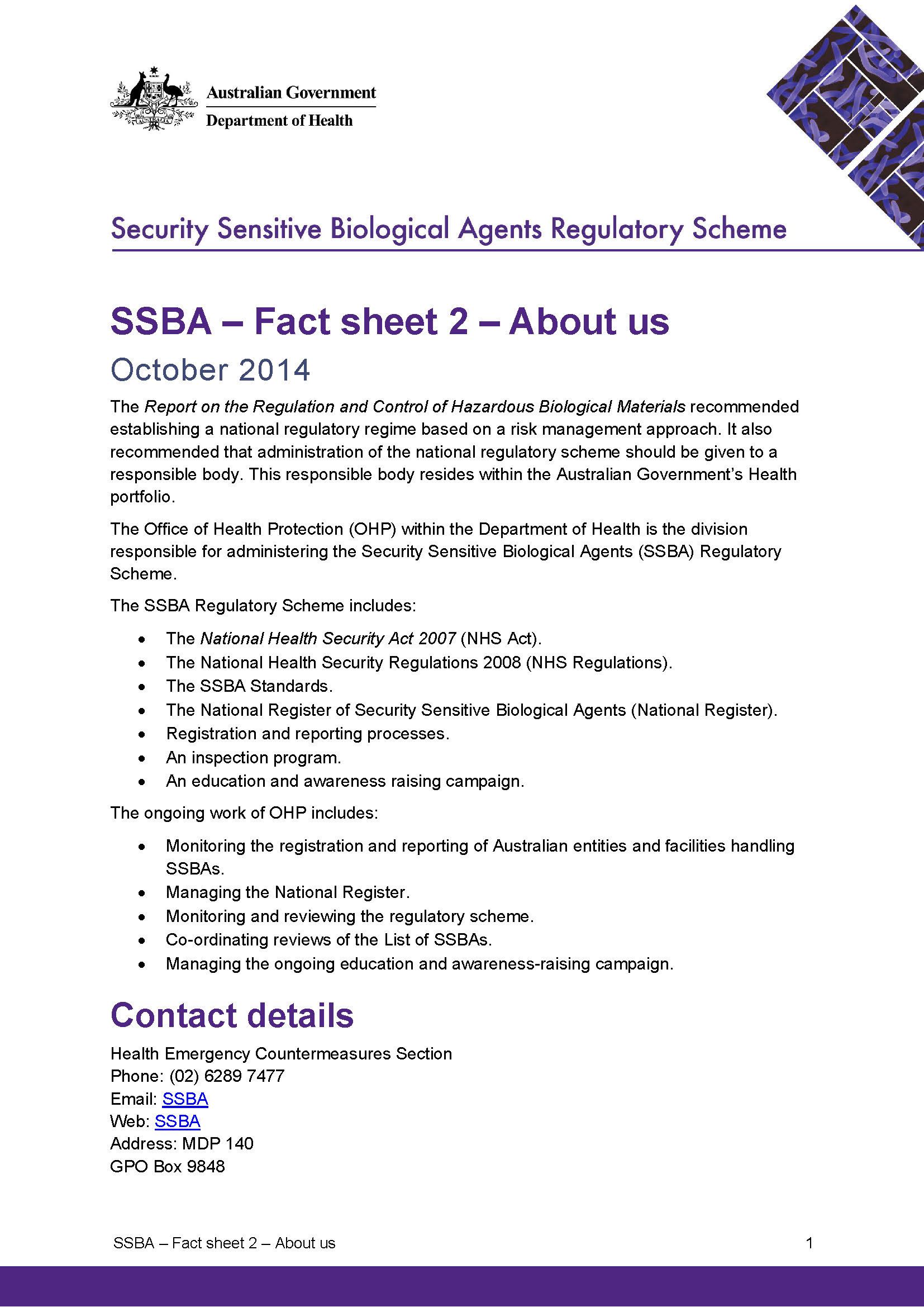
SSBA – Fact sheet 2 – About us
This fact sheet provides information about the SSBA Regulatory Scheme’s administering body along with relevant contact details. -
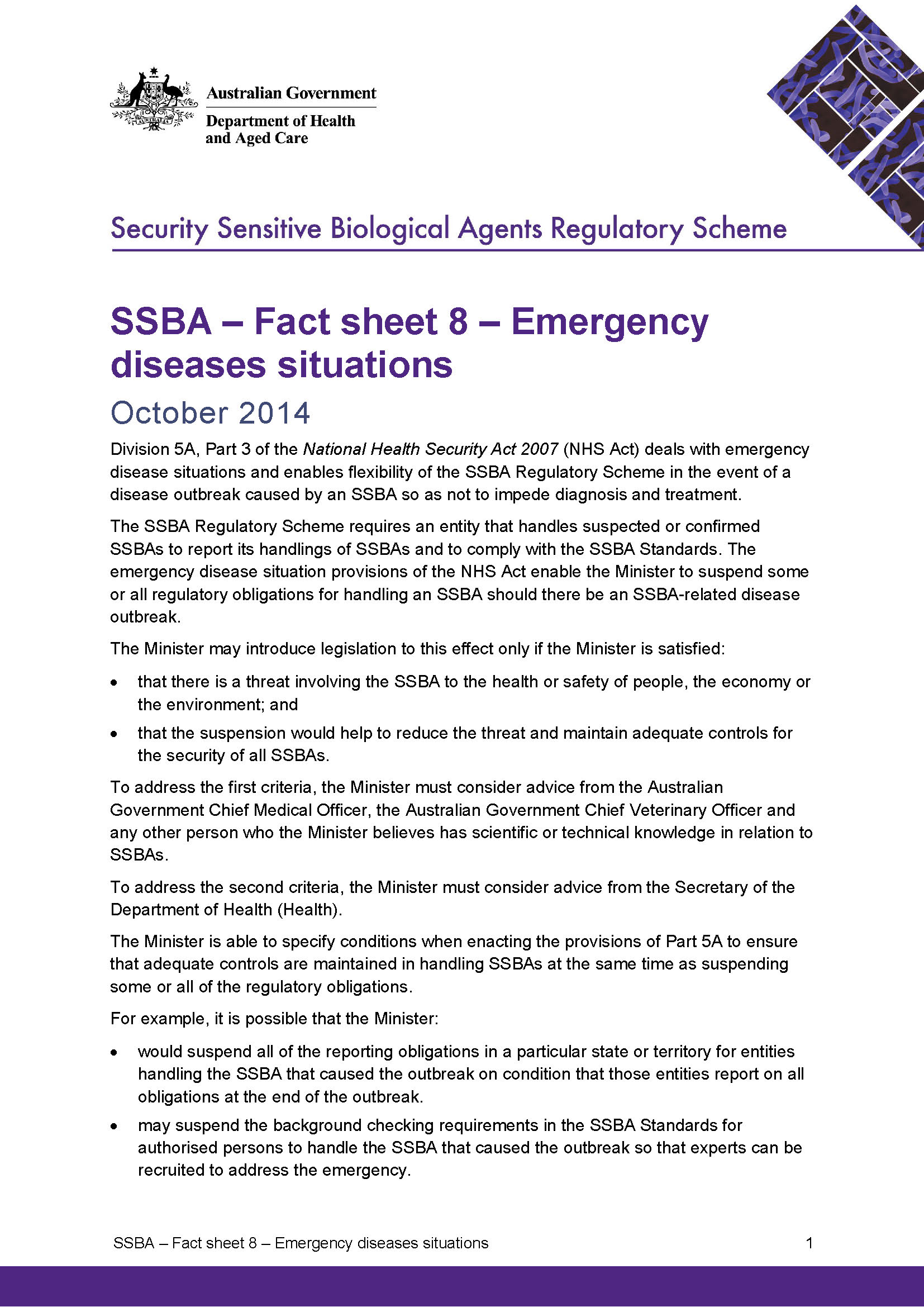
SSBA – Fact sheet 8 – Emergency disease situation
This fact sheet explains the emergency disease situation provisions that enable the Minister for Health and Aged Care to suspend some or all regulatory obligations for handling SSBAs should there be an SSBA-related disease outbreak. -
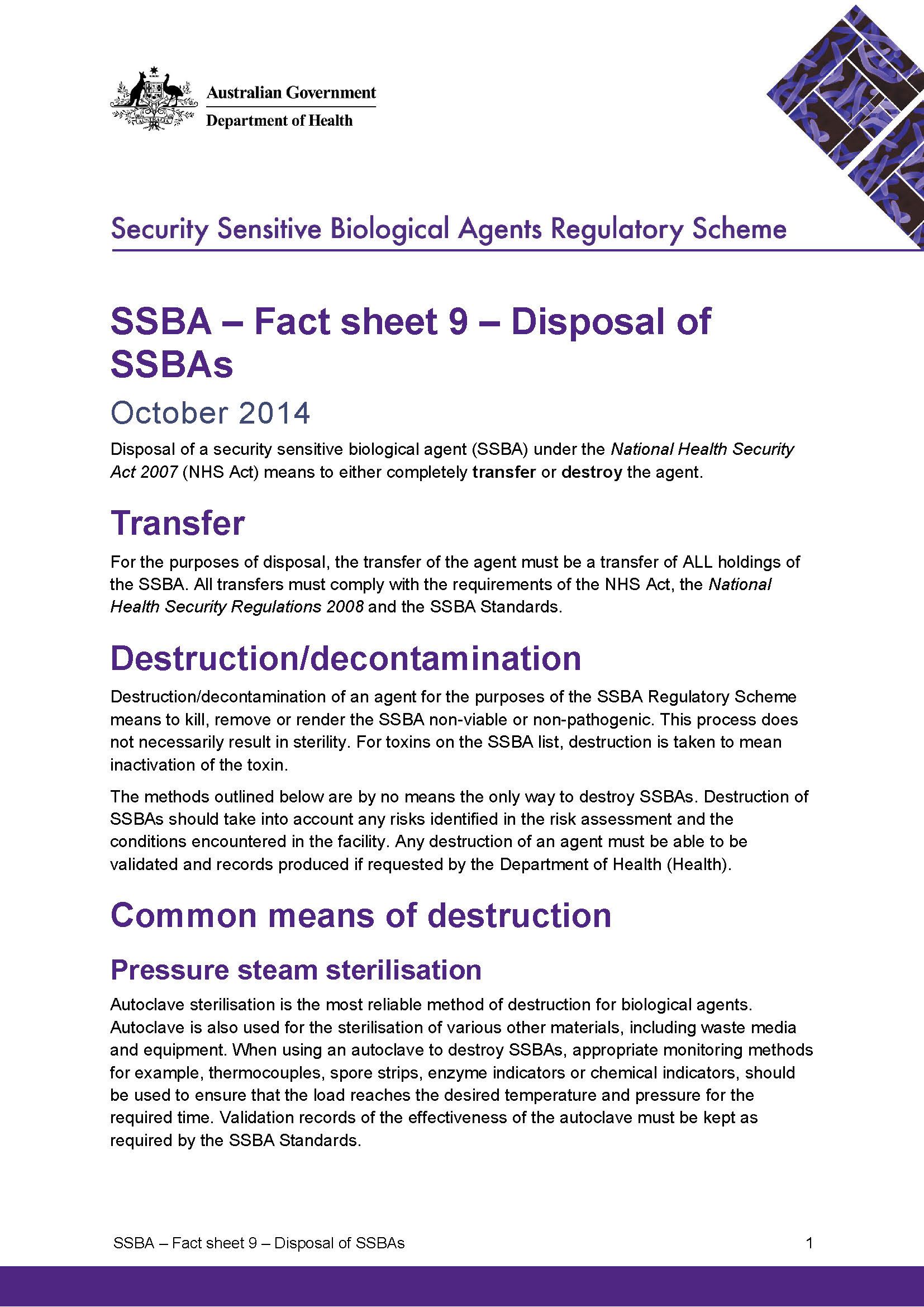
SSBA – Fact sheet 9 – Disposal of SSBAs
Find out how to correctly dispose of security sensitive biological agents (SSBAs). -
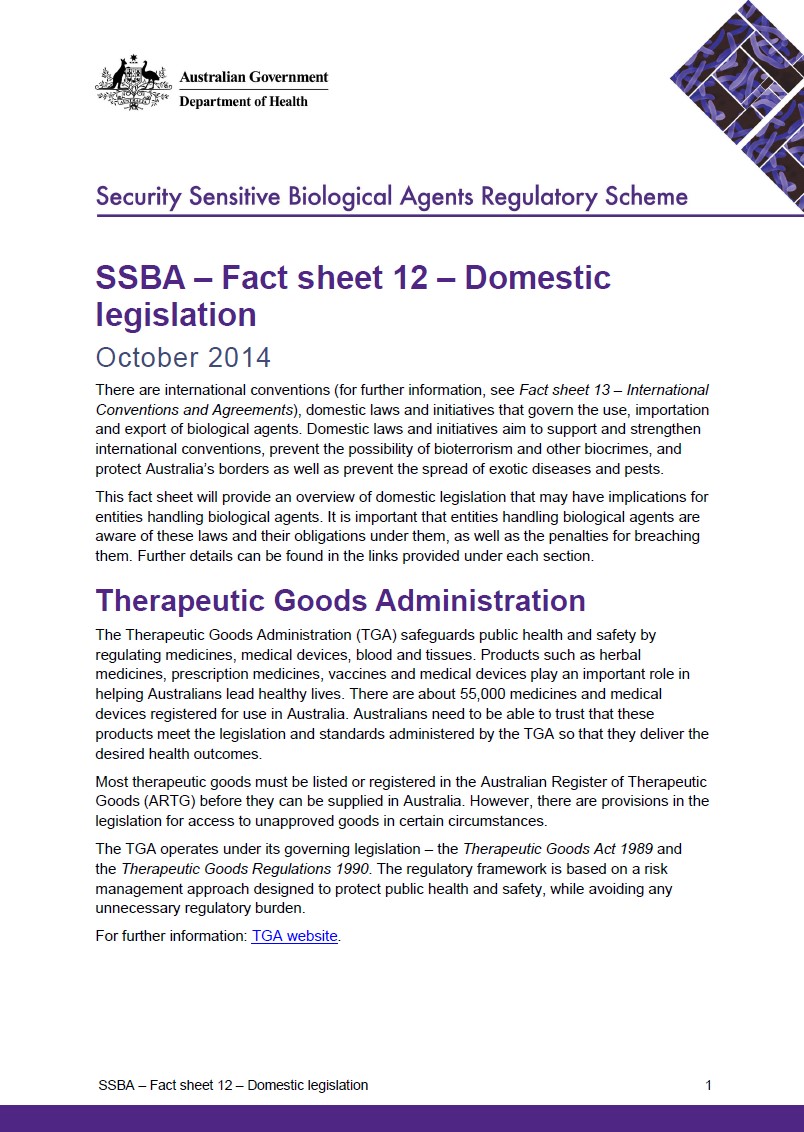
SSBA – Fact sheet 12 – Domestic legislation
This fact sheet gives an overview of domestic legislation that may have affect entities handling security sensitive biological agents (SSBAs). -
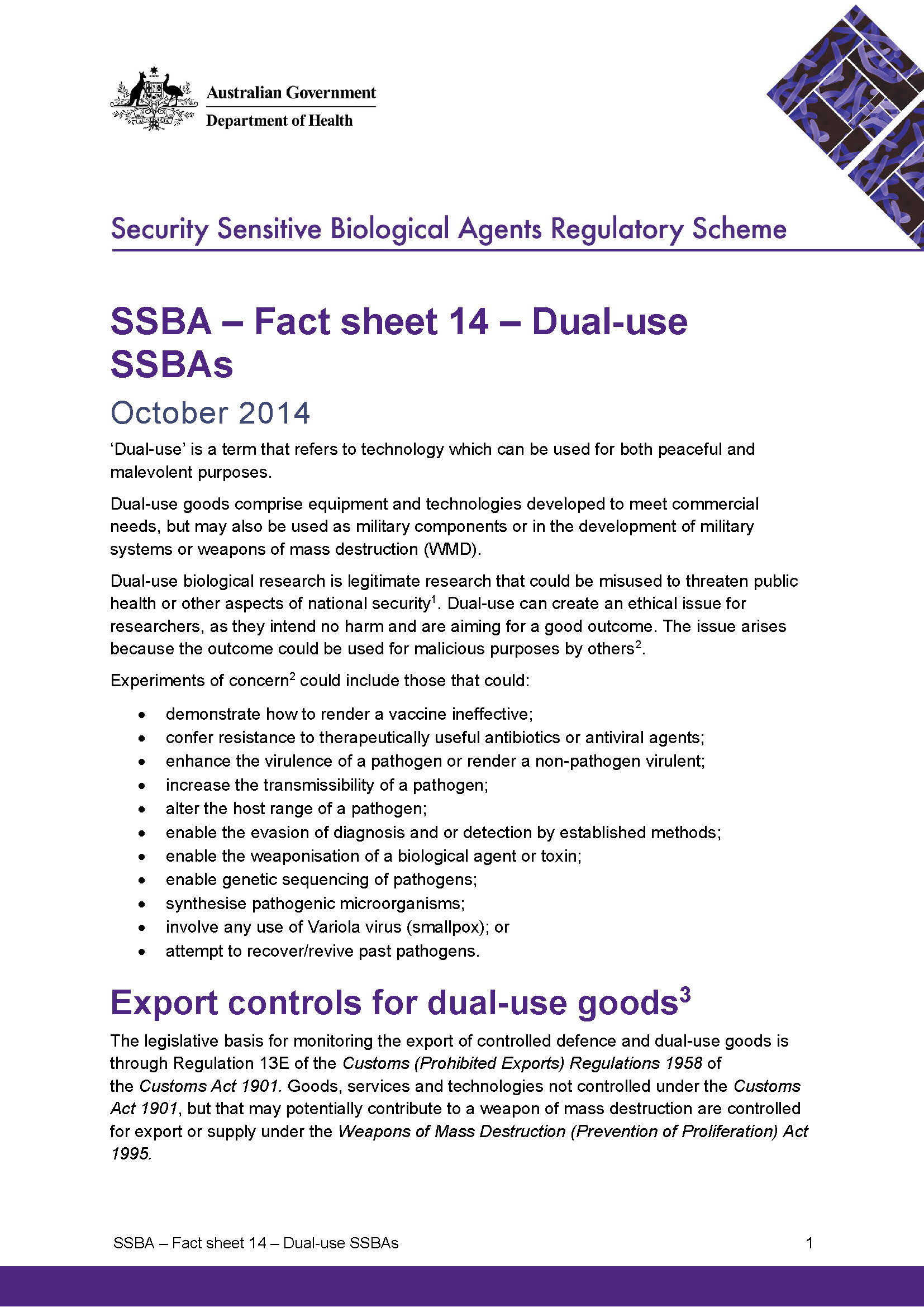
SSBA – Fact sheet 14 – Dual-use SSBAs
Learn about security sensitive biological agents (SSBAs) that can be used both for good and for harm. This is known as ‘dual-use’. Exporting these SSBAs is monitored. -
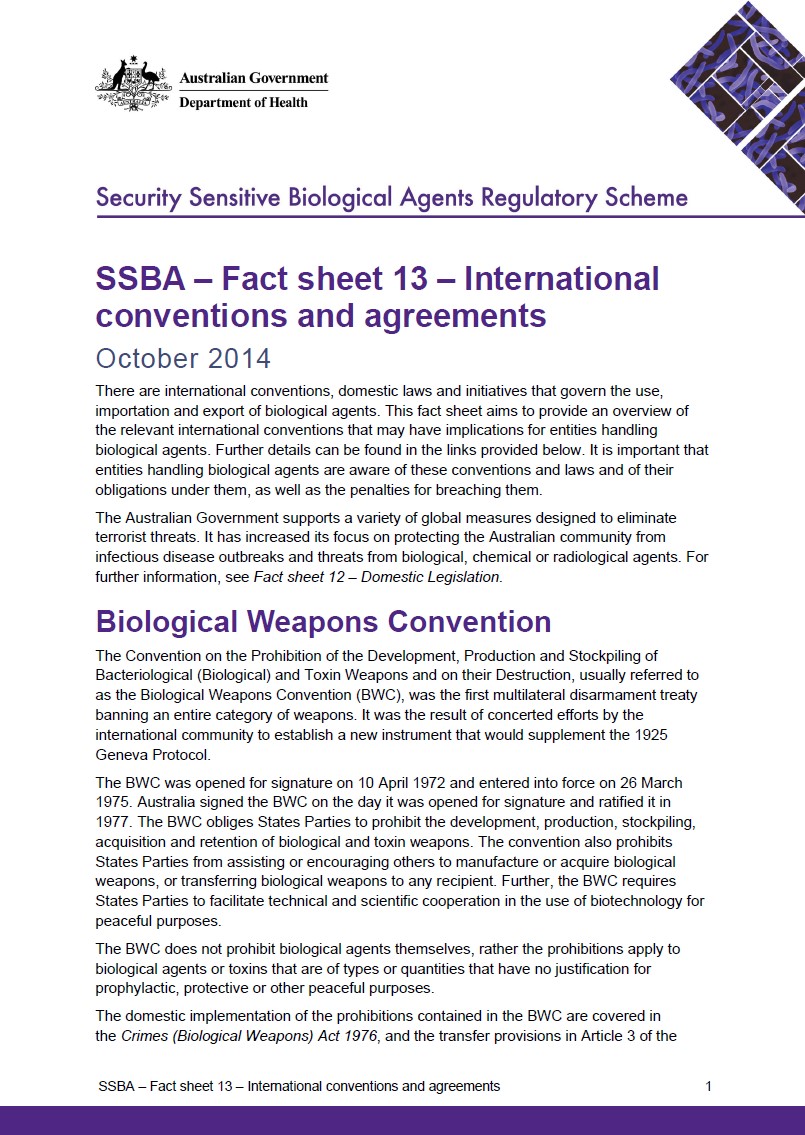
SSBA – Fact sheet 13 – International conventions and agreements
This fact sheets gives an overview of international conventions that may have implications for entities handling security sensitive biological agents (SSBAs). -
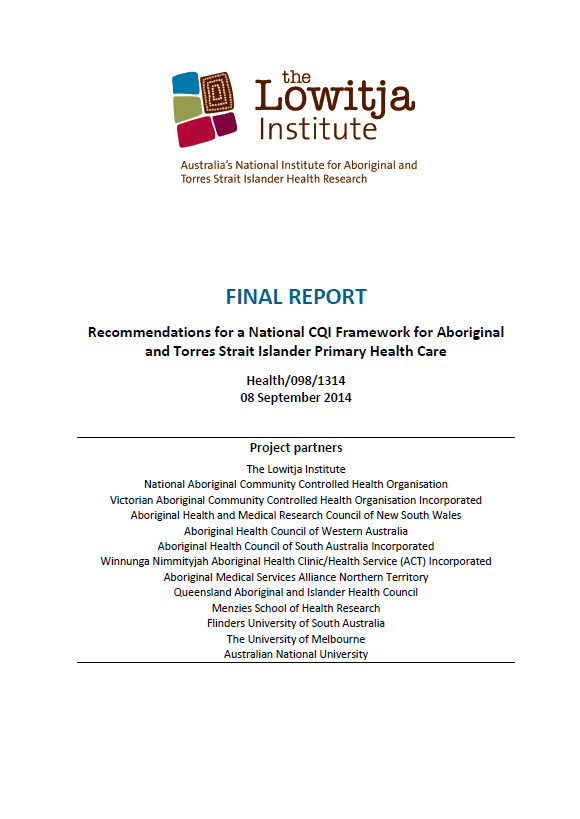
Recommendations for a national continuous quality improvement framework for Aboriginal and Torres Strait Islander primary health care – final report
This report provides advice about a national framework for continuous quality improvement in Aboriginal and Torres Strait Islander primary health care. -
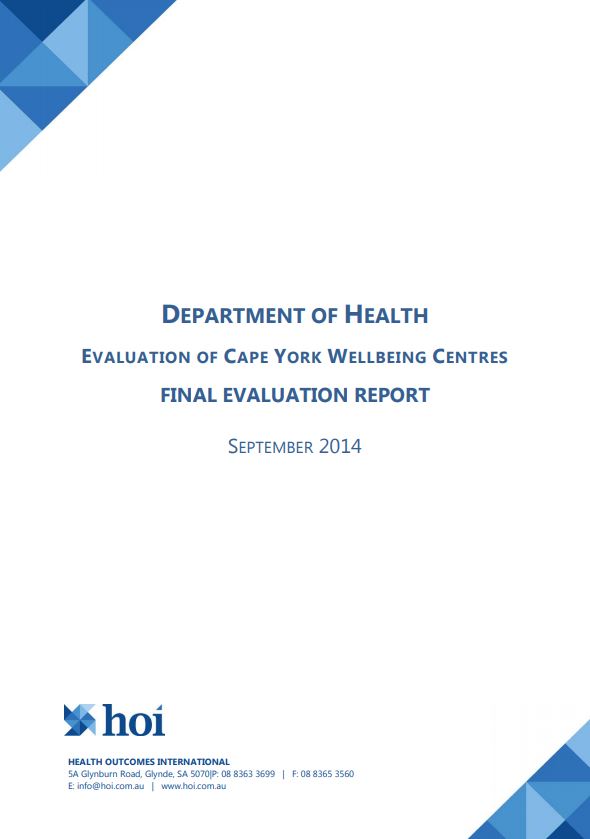
Cape York Wellbeing Centres Evaluation Report
An evaluation from 2012 to 2014 assessed the Cape York Wellbeing Centres. It looked at whether the centres reduced alcohol and substance abuse and harm in the community. This 2014 report presents the findings. -
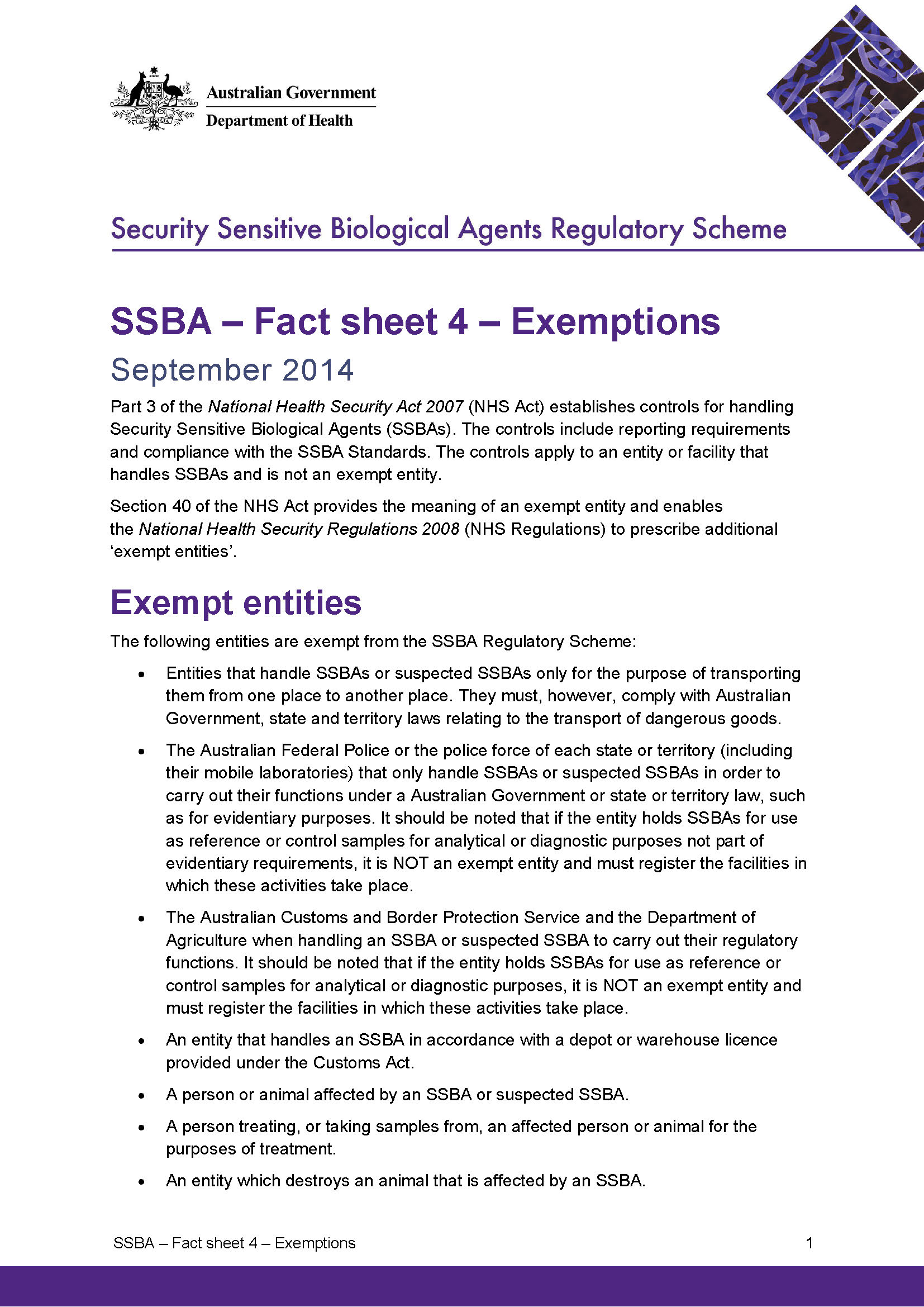
SSBA – Fact sheet 4 – Exemptions
This fact sheet outlines which entities are exempt from the Security Sensitive Biological Agents (SSBA) Regulatory Scheme. -
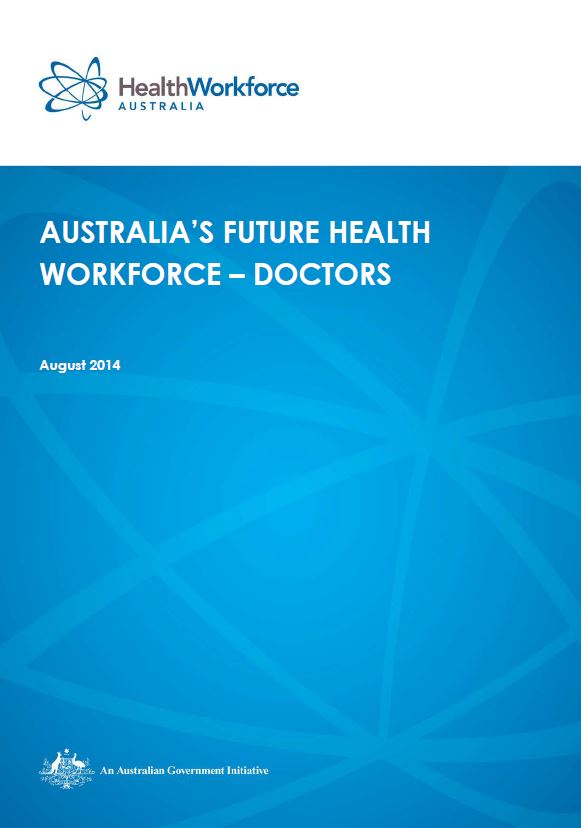
Doctors – Australia’s Future Health Workforce report
This report presents long-term, national workforce projections for doctors to 2030. It is part of our series on Australia’s Future Health Workforce. -
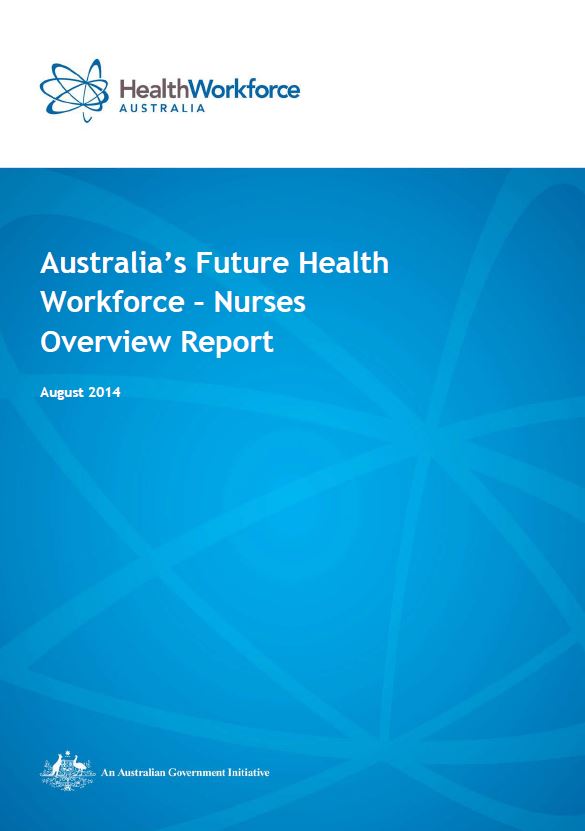
Nurses – Australia’s Future Health Workforce reports
These reports present long-term, national workforce projections for nurses to 2030. They are part of our series on Australia’s Future Health Workforce. -
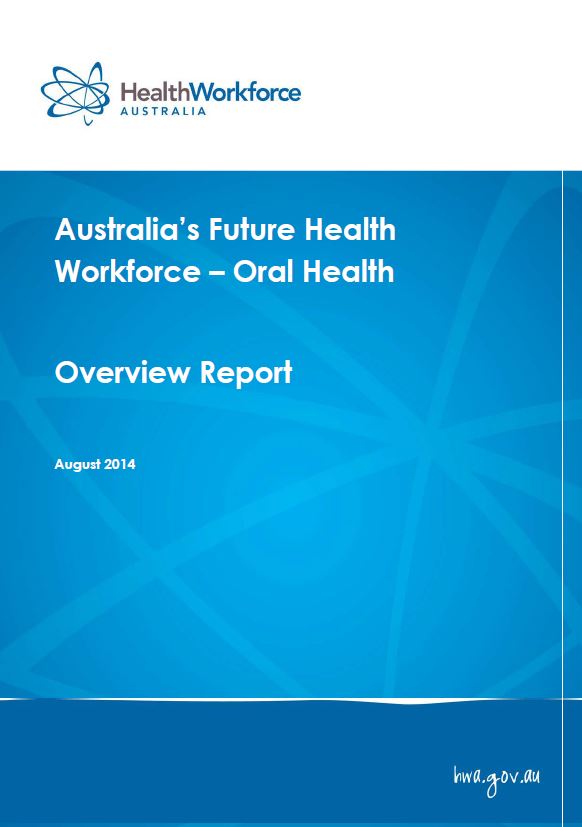
Oral Health – Australia’s Future Health Workforce reports
These reports provide the results of the oral health workforce planning projections. They are part of our series on Australia’s Future Health Workforce. -
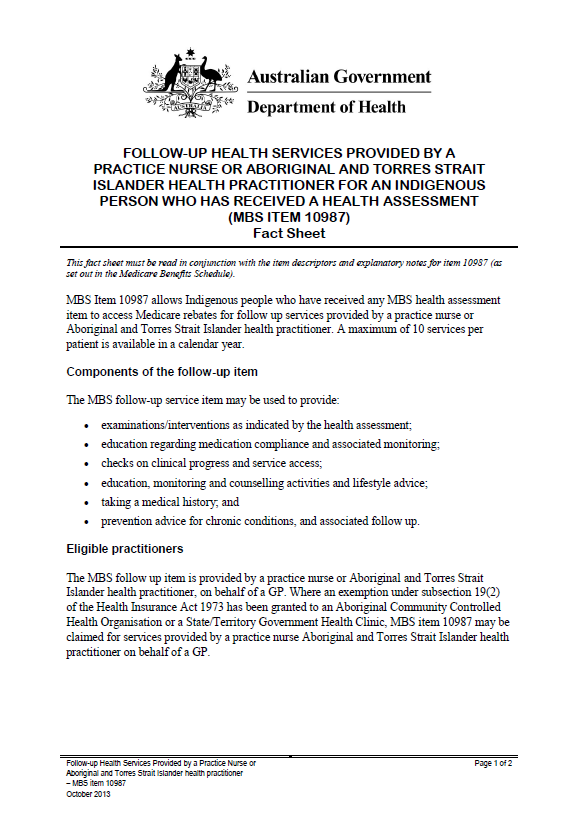
Annual health check for Aboriginal and Torres Strait Islander people – follow-up health services by practice nurse or Indigenous health practitioner
This fact sheet provides information about follow-up health services to Medicare Benefits Schedule (MBS) annual health assessments for Aboriginal and Torres Strait Islander people, when provided by a practice nurse or an Aboriginal or Torres Strait Islander health practitioner (MBS item 10987). -
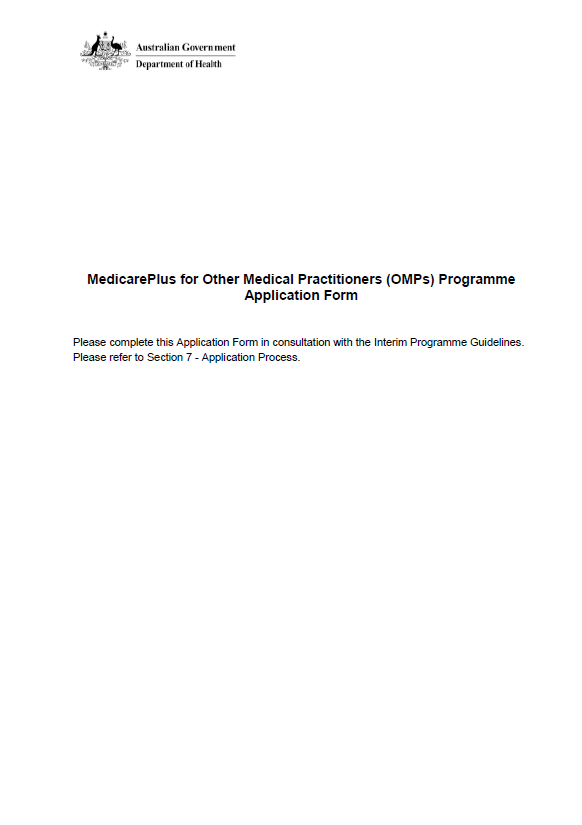
Medicare Plus Other Medical Practitioners (MOMPs) application form
This form is for existing participants seeking to access this program at a new location, or transfer from one of the other OMPs programs.
